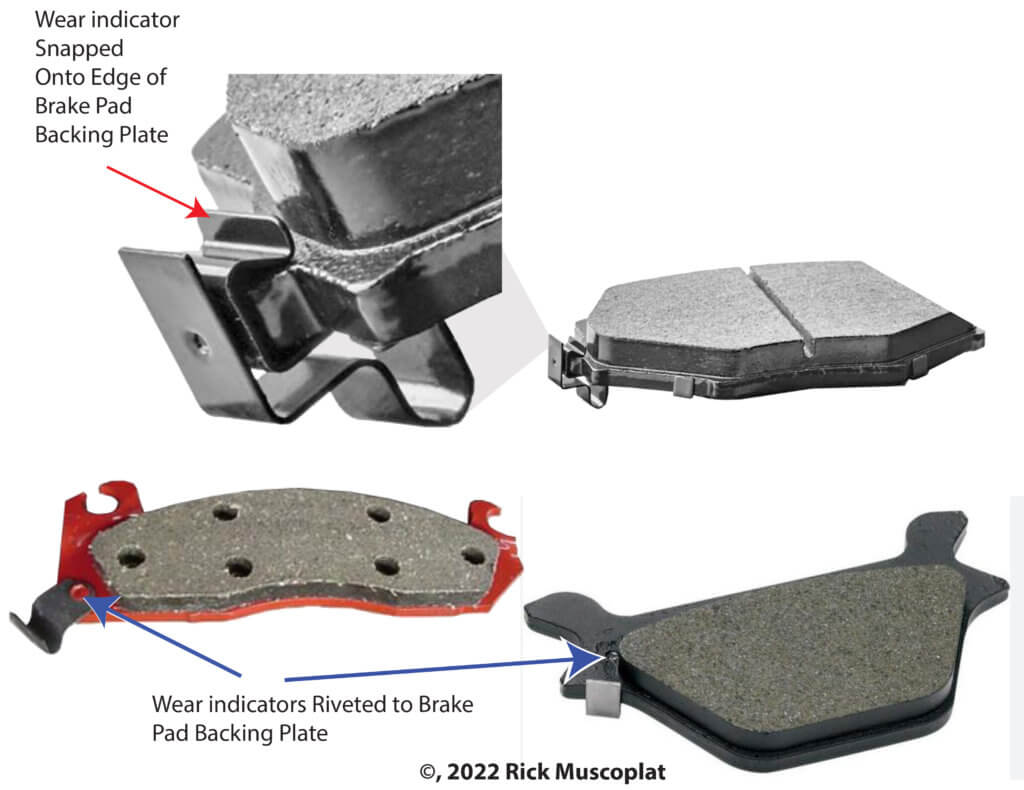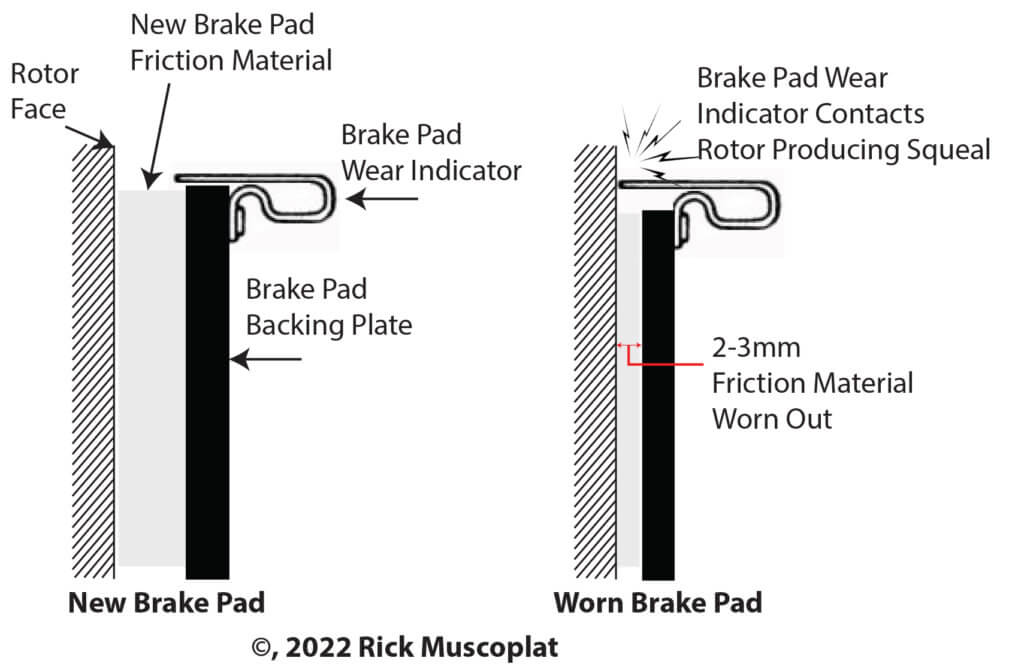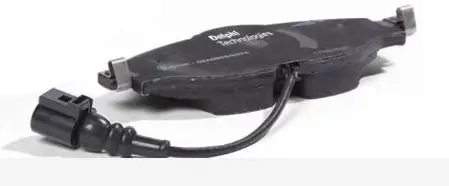A brake pad wear indicator installs on the inboard pad
The the brake pad wear indicator installs on the inboard pad because that pad wears slightly faster than the outboard pad
Brake pad wear indicators come in two styles: acoustic wear indicators that rub against the rotor when the pads wear down to 2-3mm or electronic wear indicators that turn on a warning light on your dash.
A brake pad wear indicator or “squealer” attaches to the leading edge of the inboard brake pad. The leading edge is the portion that first contacts the rotor when moving forward. Its job is to contact the rotor and make a high-pitched squeal once the friction material wears down to 2-3mm. That’s why it’s called a brake pad squealer.
How the brake pad wear indicator works
When the brake pad friction material wears down to about 2-3mm, the soft edge of the clip contacts the rotor and makes a high-pitched squealing sound.
How it’s attached to the brake pad
The clip snaps onto the brake pad backing plate.
Make sure you’ve cleaned rust off the caliper abutment bracket so the brake pad can move. Don’t apply any lubricant to the clip where it touches the rotor.

How electronic break wear sensor work
First generation brake wear sensors
First generation electronic brake pad wear sensors incorporate
a loop of current-carrying wire molded into the friction material. The system passes a low current through the loop. As the pad wears out, the loop becomesis exposed and make contacts with the rotor, creating an open circuit. The open circuit condition lights a warning light on the dash to inform the driver that the brake pads should be replaced.
Next generation sensors
The latest sensors can gauge how much mileage is left on the brake pads. Referred to as two-stage sensors, they incorporate two resistors embedded in the friction material; but at different depths. When the first resistor circuit is worn through, resistance in the circuit increases and the system uses an algorithm to estimate how much life is left in the brake pad. The algorithm incorporates other data like wheel speed, mileage, brake pressure, brake temperature and brake operating time. The remaining brake pad life is displayed on the dash either as a physical number on vehicle start up, or a warning light which changes color as the pad wears. When the second resistor loop breaks, the circuit triggers the warning light that advises it’s time for a brake service.
©, 2022 Rick Muscoplat
Posted on by Rick Muscoplat

